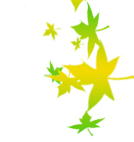Hiking duration:
- on summer: 7 – 8 h
- on winter: forbidden
Refuges: the Priboi Spring refuge, the Curmătura Builei Refuge
Water sources: the Priboi Spring, Curmătura Builei
Description:
This is the trail on the main ridge of the Buila-Vânturariţa Massif, rated as highly difficult, as the ascent overpasses 1000 m, and it is forbidden during the winter, because there are many exposed tracks.
The trail starts from Prislop Valley (Costeşti), upstream the Priboi Spring (where you can find shelter, water and an information panel). The ascent begins gently, on an old tractor road, through the pine and spruce forests, and then through the beech ones. About 30 minutes later, you’ll get to a plateau, wherefrom the path starts sloping to the right to a spring. Passed this track, you’ll find the old road again, and, after 30 more minutes, it will take you under the cliffs on the north-western slope of Mount Cacova. You’ll get on the ridge, where you’ll see an arrow-pointer that marks the crossroad with track nr.5, signed by a red triangle, that goes down to Pietreni village. Down the valley, you’ll see three sheepfolds – from right to left, they are: Cacova, near a dollyne with a small lake, La Văcărie and Piatra, near a wider dollyne with a lake. The trail follows only the ridge from hereon, the topline being the main reference point. The marks are painted on rocks, mostly at ground level, and the trail is not obvious on the longest part of the ridge.
The trail follows the ridge on a course from north to east. You start going up on Mount Cacova and, 10 minutes later, you’ll be getting at another crossroad, wherefrom you’ll separate from trail no. 5, that goes down on the north-western slope, heading towards the Cheia Refuge. After 10 more minutes of going up on Culmea Pleşuvă, you’ll arrive on the Cacova Peak, wherefrom you’ll walk down again, through a pass that states the boundary between Mount Cacova and Mount Piatra. The ascent pursuits the same course and, 30 more minutes later, you’ll reach the Piatra Peak (1643 m), where you’ll get a great view to the Buila Peak, and pass the Costeşti Valley, to the southern heights of Căpăţânii Mountains: the Zănoaga and Netedu peaks, and then Zmeuret and Lespezi. To the south, there are the neverending waves of the Subcarpathian hils. The trail continues on the rocky ridge, to the north, along the steepness. 5 more minutes later, you’ll get at the edge of a big slope breakdown, that block the passing in three directions: to the left, straight ahead and to the right, where the bottomless abysses give a feeling of dead end. At about 150 m lower, as you look towards Curmătura Buila, there is a deserted timber building on the edge of the forest – the Curmătura Builei Refuge (also called the Priest’s Refuge), used as a shephard’s shelter on summer – and a recently rebuilt sheepfold. To get down there, you have two ways to choose from: the two chimney-shaped descents. The most accessible is the western one, called „Bucinişul Mare”. The trail reappears on the upper side of the chimneys and goes down between the two walls, until it gets open-wide on the grass above into the narrow ridge at Curmătura Builei (1540 m). There is an arrow-pointer here at the crossroad with trail no. 6, marked with an yellow dot, that comes up from Bărbăteşti to the Pătrunsa Hermitage and crosses the ridge, going down to the Costeşti Valley, and trail no. 7, marked by a blue cross, that starts up from Bărbăteşti.
From the refuge, the trail goes up steeply through the glade to north-east. After 15 minutes through the woods, it goes right, to the alpine meadows, at the edge of which it crosses a small straight, through which it gets into Mount Albu. Towards the south-east, there is a great view to Claia Ţucla, the walls of the chimneys and to the Piatra Peak. From the small strait, the walking course changes to the left, the path getting close to the ridge. Reaching, the Mount Albu platform, the path split in several tracks, difficult to follow. On the left, as you go upwards, parallel to the ridge, there a small canyon relatively deep, extended beneath the Buila Peak (1849 m). The trail goes upwards again, to the topline. In its north-eastern corner, the limestone range gets more and more uneven, and the peaks sharpen. Close by, the Ştevioara Peak rises its triangular profile, separated from Buila by a high pass (about 1780 m). At the bottom of the walls, across the detritus area, you can see the Stone Glade. From the Ştevioara Peak, comes a rapid descent through the juniper shrubs, to the northern pass, the Ştevioara Pass (1790 m). There is an indicator here, that marks the end of trail no. 9, marked with a blue dot, that gets up to the ridge coming from the Pahomie Hermitage along the Beautiful Ridge.
From the Ştevioara Pass there is a 30 minutes ascent up to the Vânturariţa Mare Peak (1885 m), the highest, most interesting and uneven in the Massif. There is another pointer here, that shows you that the ridge trail proceeds towards north-east, but warns you that it is dangerous and, thus, closed. The track that goes to Curmătura Oale (crossroad with trail no. 10, marked with a yellow dot) is to be done in a 3 hours’ walk, but it is only recommended to the experienced hikers. The trail was not re-marked, as it sets big orientation problems due to its often course changes on one side and the other of the ridge, and it has a few very exposed sections, descending on inclined chimneys and shrubby areas.
When hiking on this trail, we recommend that you previously ask the Administration of the Buila-Vânturariţa National Park for a hiking trail guide.



